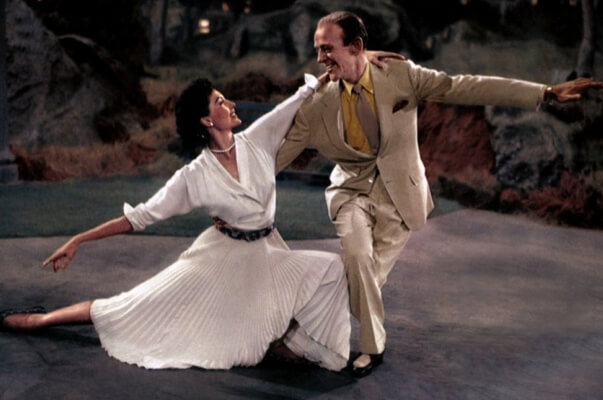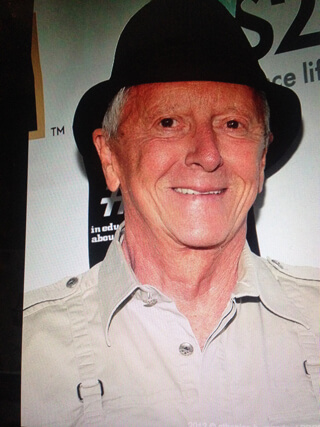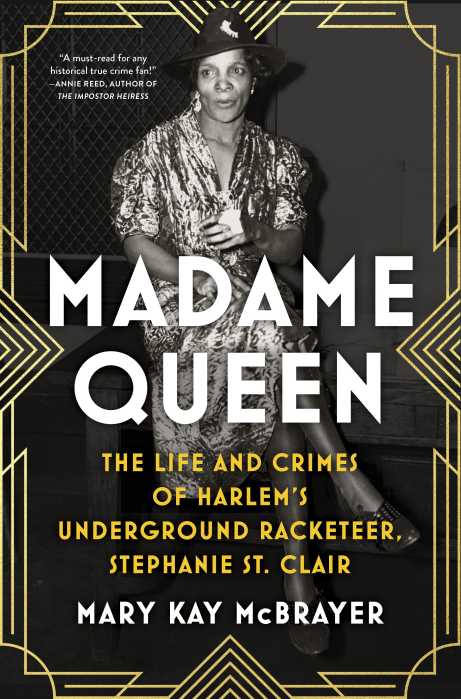FILM FORUM VIA PHOTOFESTKay Francis, Herbert Marshall, and Miriam Hopkins in Ernst Lubitsch’s 1932 “Trouble in Paradise,” screening on June 9. | FILM FORUM
BY DAVID NOH | No single filmmaker has provided me with more sheer delight than Ernst Lubitsch, currently enjoying a comprehensive retrospective marking his 125th birthday at Film Forum. An always-surprising effervescent wit, uncanny sophistication, and radiating charm were the hallmarks of his work and, in his day, he was the highest-rated director in Hollywood, recognized as such by the industry and public alike.
Although his most famous films — “Ninotchka” (Jun. 13, 2:30 p.m.; Jun. 15, 2:30 & 8:30 p.m.); “The Shop Around the Corner” (Jun. 13 & 15, 12:30 & 4:40 p.m.), “To Be or Not To Be” (Jun. 10, 2:30 & 6:45 p.m.; Jun. 11, 4:50 & 9 p.m.) and his lustrous masterpiece “Trouble in Paradise” (Jun. 9, 12:30, 2:15, 4 & 8:20 p.m.) — are all recognized as indelible classics and frequently revived, Lubitsch’s name seems to be largely forgotten today. Among the great studio era comic directors, Billy Wilder and Preston Sturges — who paid special homage to Lubitsch in his most personal film, “Sullivan’s Travels” — are far more likely to be remembered than he.
There could be any number of reasons for this. Lubitsch has been dead for 70 years, and, unlike those aforementioned talents, he took no writing credit, although he worked in close tandem with his laudable screenwriters (Wilder, who idolized him, was one of them), guiding and sometimes adding jokes and lines. So he seemingly lacked that certain “complete” creative control that marks the so-called true auteur. And —perhaps most saliently — when Lubitsch’s work is really examined, the sad conclusion is that he is hopelessly out of date.
IN THE NOH: Hollywood’s greatest comedy director gets his due at Film Forum
That is not his fault. It’s ours. What place does his sublime brand of humor have in a modern age where commercial films are aimed at the taste of 12-year-old boys, subtlety has evaporated, and laughs come from bodily functions — a hopeful bride having diarrhea in her wedding gown — graphic violence, and beyond-lewd dialogue? The hushed erotic suggestiveness that fueled films like “Trouble in Paradise” and “Design for Living” (Jun. 8, 12:30, 4:10 & 7:50 p.m.; Jun. 14, 12:30 & 4:10 p.m.) might merely bore 2017 audiences, more used to the in-your-face approach of an Amy Schumer or Judd Apatow.
Besides comedy, Lubitsch was adept at musicals; his “The Love Parade” helped to raise the infant talkie genre to another level. But the Continental elegance illuminating that film, “Monte Carlo,” “The Smiling Lieutenant,” and his version of “The Merry Widow” (Jun. 12, 12:30, 4:10 & 7:50 p.m.) — the best ever — is a world apart from the hapless, trendy revisionism of “La La Land.” The most honest explanation for his relative obscurity today, then, may be the simple fact that he was simply too good for the average modern moviegoer, who despite — or perhaps because of — the ceaseless advances in technology, has regressed, culturally speaking.
The true “gets” of the Film Forum series are the ultra-rare silent films Lubitsch made in his native Germany, which include his smashingly successful forays into historical biography, “Madame DuBarry” and “Anna Boleyn” (Jun. 25, 1:20 p.m.). These will have the benefit of live piano accompaniment by the wonderful Steve Sterner. Culminating with “The Patriot,” made in Hollywood with Emil Jannings, who won the first Best Actor Oscar for it, and which sadly seems to be a lost film, Lubitsch took the mute medium as far as it go in terms of storytelling.
Sound, of course, added immeasurable dimension to his work: the best known Lubitsch films are really unthinkable without the dialogue that was inevitably described as “sparkling,” not to mention his canny, never overdone use of piquant music, as well as contrasting complete silence, which could so effectively underline a fraught situation.
The “Lubitsch touch” became common coin to describe his soufflé-light comic technique, and nowhere was it more in evidence than in “Trouble in Paradise.” I call this his chef-d’oeuvre for the way he makes everything — the performances, Samson Raphaelson’s gossamer yet biting script, Victor Milner’s shimmering cinematography, Hans Dreier’s beyond-Deco sets, and Travis Banton’s sensually bias-cut gowns — coalesce into pure, uproarious, and excruciatingly sexy perfection. Cello-voiced Herbert Marshall, as an international jewel thief, shows that Hollywood possessed a seductive, gentlemanly master of high comedy well before Cary Grant, while Miriam Hopkins and Kay Francis, the first hilariously staccato in her schemingly avaricious ways, the second more luxuriously languid and legato, are a breathtaking study in contrasts.
The feline, febrile Hopkins, the finest American movie actress of the 1930s, emerges as Lubitsch’s chief muse for this and two other films. In the delicious operetta “The Smiling Lieutenant,” she is a dowdy Ruritanian princess who is taught how to entice her new commoner husband, Maurice Chevalier, by his abandoned lover, Claudette Colbert (first displaying the lithe charm and grace that would make her the screen’s leading comedienne of the period). At Hopkins and Colbert’s first uneasy meeting, following a slap or two, they fall into friendship and the most enchanting duet, “Jazz Up Your Lingerie.”
Fredric March, Miriam Hopkins, and Gary Cooper in Ernst Lubitsch’s 1933 “Design for Living,” screening on June 8 and 14. | FILM FORUM
“Design for Living” is Hopkins at her quicksilver best, in this insanely extravagant adaptation of Noël Coward’s infamous ménage-a-trois. “Extravagant” because Paramount paid big bucks for the play’s rights, only to have Lubitsch and scenarist Ben Hecht trash the entire script and come up with their own, superior adaptation. A self-proclaimed “Mother of the Arts,” Hopkins both inspires and sleeps with Fredric March and Gary Cooper, as playwright and painter, respectively. At one point, her libertine character deliciously describes the devastating appeal of both men, comparing them to contrasting hats, and, lest you think that Hollywood stinted on Coward’s homosexual innuendos, in an impassioned moment, Cooper boldly confesses his love for both of them.
“Cluny Brown” (Jun. 10, 12:30 & 8:45 p.m.) with an impeccable ensemble cast headed by the brilliant Charles Boyer and a breathtakingly sexy and funny Jennifer Jones, is my personal favorite Lubitsch, but I want to also make a case for the little-known “One Hour with You” (Jun. 12, 2:30, 6:10 & 9:50 p.m.). If you’ve ever wondered why Chevalier was such a big star (and Lubitsch’s favored leading man), this is the one to see. He is irresistible as a man torn between devotion to his gorgeous wife, Jeanette MacDonald, and to her old schoolmate who has returned on the scene, played by the completely forgotten, utterly delectable Genevieve Tobin. Possessing something of the exquisite looks and glancing comic technique of Vivien Leigh, the luxuriously Banton-garbed Tobin delivers the slyest, most tantalizingly teasing portrait of a femme fatale imaginable.
Whither the snows of yesteryear? In the 1980s, I learned that Tobin was alive and living in Manhattan under the name of Mrs. William Keighley, having married the late Warner Brothers director and retired after appearing in his “No Time for Comedy” (1940). I cold-called her, and she invited me to her upper Fifth Avenue apartment. It was a sobering experience for young me: although beautifully preserved and chicly dressed in black with demure white gloves, Tobin was clearly showing signs of dementia, fluttering all over the place and wanting to only speak French. I could not get her to stay on any one subject, apart from her long-lasting acrimony with her sister Vivian (who was in DeMille’s “The Sign of the Cross”), to which she kept returning. I couldn’t help but notice that the vast apartment seemed to have been stripped of all paintings and much of the furniture, while Tobin’s nurse-companion watched a soap opera in the same room. When Tobin mentioned something about having somehow lost all of her jewelry, I felt uneasy, indeed. That sad meeting has always haunted me, but I am so glad that on June 12, you can go to the Forum and see her, as she is preserved forever, creamy-young and glittering with glamour and élan.
THE LUBITSCH TOUCH | Film Forum, 209 W. Houston St. | Through Jul. 2 | filmforum.org/series/the-lubitsch-touch




































